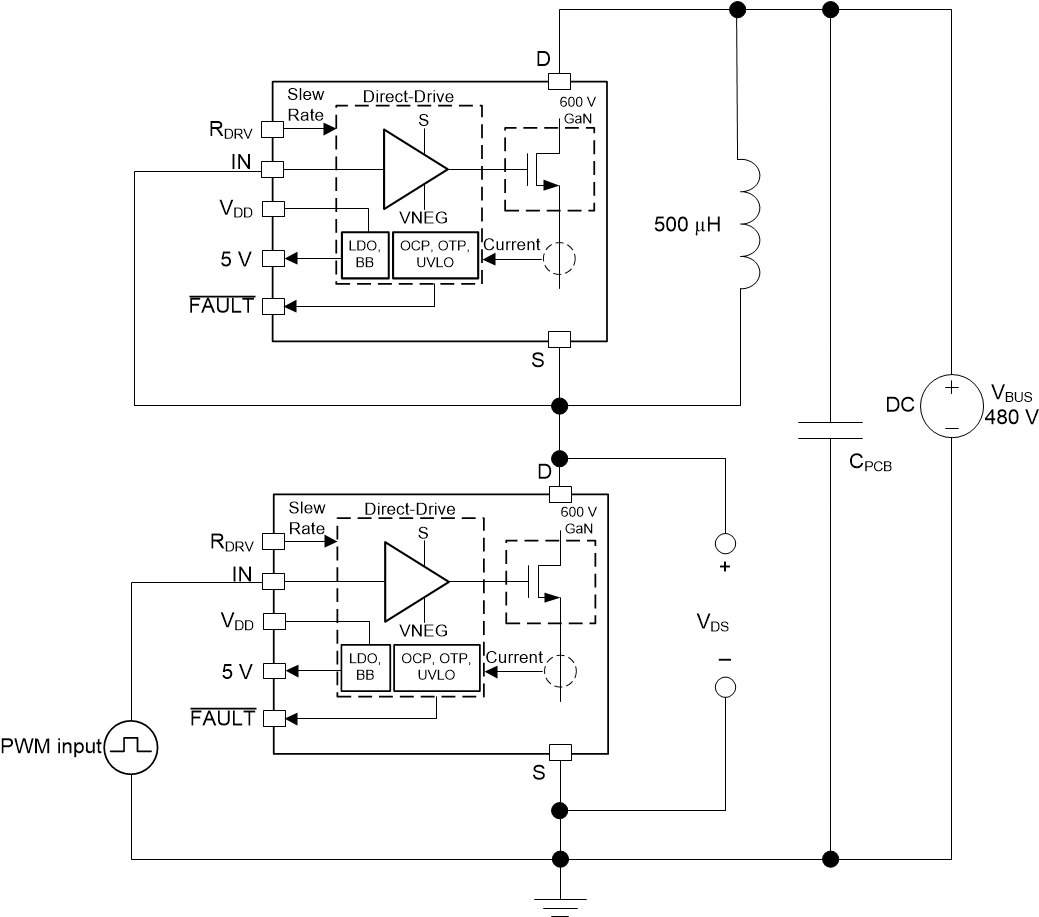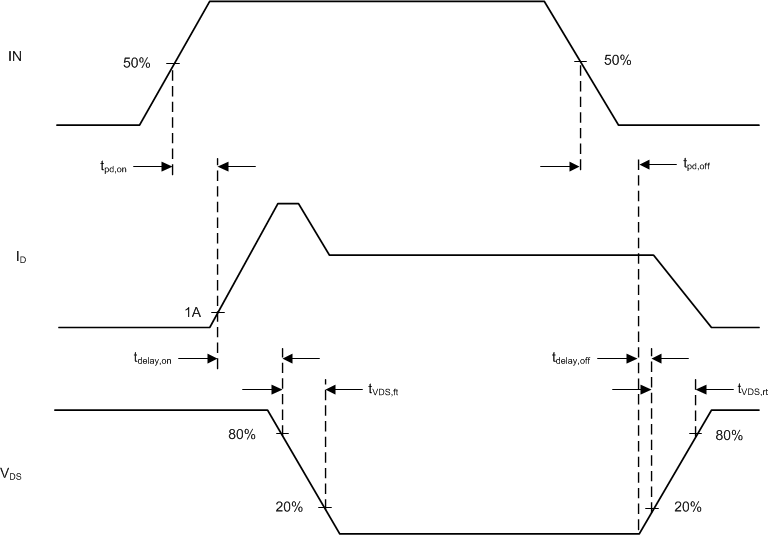SNOSD10F April 2016 – May 2020 LMG3410R070 , LMG3411R070
PRODUCTION DATA.
- 1 Features
- 2 Applications
- 3 Description
- 4 Revision History
- 5 Pin Configuration and Functions
- 6 Specifications
- 7 Parameter Measurement Information
- 8 Detailed Description
- 9 Application and Implementation
- 10Power Supply Recommendations
- 11Layout
- 12Device and Documentation Support
- 13Mechanical, Packaging, and Orderable Information
Package Options
Mechanical Data (Package|Pins)
- RWH|32
Thermal pad, mechanical data (Package|Pins)
Orderable Information
7.1 Switching Parameters
The circuit used to measure most switching parameters is shown in Figure 11. The top LMG341xR070 in this circuit is used to re-circulate the inductor current and functions in third-quadrant mode only. The bottom device is the active device; it is turned on to increase the inductor current to the desired test current. The bottom device is then turned off and on to create switching waveforms at a specific inductor current. Both the drain current (at the source) and the drain-source voltage is measured. The specific timing measurement is shown in Figure 12. It is recommended to use the half-bridge as double pulse tester. Excessive 3rd quadrant operation may over heat the top LMG341xR070.
 Figure 11. Circuit Used to Determine Switching Parameters
Figure 11. Circuit Used to Determine Switching Parameters  Figure 12. Measurement to Determine Propagation Delays and Slew Rates
Figure 12. Measurement to Determine Propagation Delays and Slew Rates